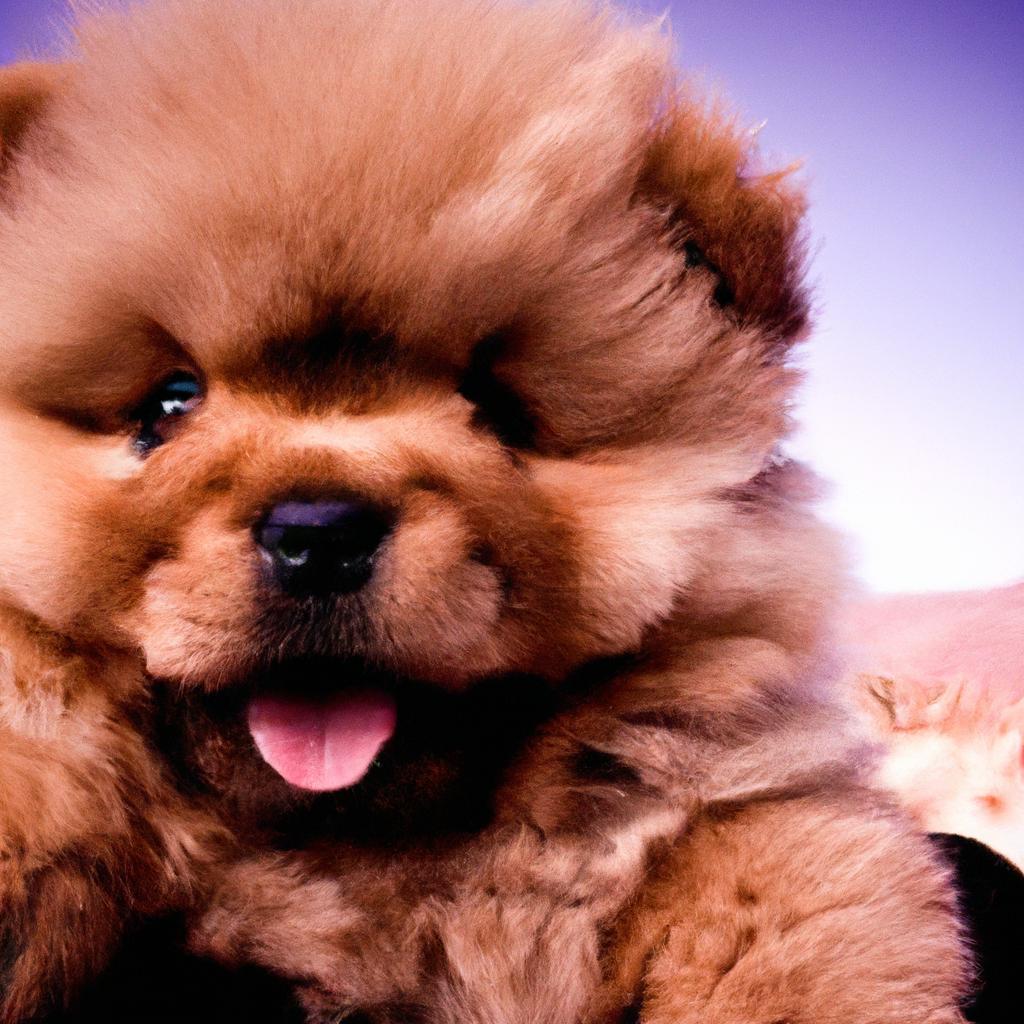In a cozy apartment, Sarah struggled to find the perfect companion. She wanted a dog that would thrive indoors, be gentle with her children, and adapt to her busy lifestyle. After much research, she discovered the Cavalier King Charles Spaniel. With their affectionate nature and moderate energy levels, these dogs are ideal for small spaces. They love cuddling on the couch after a long day and are great with kids. If you’re seeking a loyal friend that fits seamlessly into your indoor life, the Cavalier is undoubtedly the best choice.
Contents
- Choosing the Ideal Indoor Dog for Your Lifestyle
- Understanding Temperament and Energy Levels in Indoor Breeds
- Essential Care and Maintenance for Indoor Dogs
- Top Recommendations for Indoor Dog Breeds That Thrive in Small Spaces
- Q&A
Choosing the Ideal Indoor Dog for Your Lifestyle
When selecting the perfect indoor dog, it’s essential to consider your living situation and daily routine. Some breeds thrive in smaller spaces, while others require more room to roam. If you live in an apartment, look for breeds known for their adaptability, such as the **French Bulldog**, **Cavalier King Charles Spaniel**, or **Pug**. These dogs are not only compact but also tend to be more relaxed, making them ideal companions for urban dwellers.
Another crucial factor is your activity level. If you lead a busy lifestyle with limited time for exercise, consider breeds that are content with shorter walks and indoor playtime. Breeds like the **Shih Tzu**, **Bichon Frise**, or **Chihuahua** can be perfect for those who prefer a more laid-back approach to dog ownership. On the other hand, if you enjoy being active and have the time to dedicate to daily exercise, breeds such as the **Beagle** or **Miniature Schnauzer** can provide the energy and companionship you seek.
Additionally, consider the grooming needs of potential breeds. Some dogs require regular grooming and maintenance, while others are relatively low-maintenance. If you prefer a dog that doesn’t shed much and requires minimal grooming, look into breeds like the **Basenji** or **Italian Greyhound**. However, if you don’t mind a bit of extra work, breeds like the **Yorkshire Terrier** or **Maltese** can offer a beautiful coat that’s worth the effort.
Lastly, think about your family dynamics and any allergies that may be present. If you have young children or other pets, it’s vital to choose a breed known for its friendly and sociable nature. Breeds such as the **Labrador Retriever** or **Golden Retriever** are renowned for their gentle temperament and adaptability. For allergy sufferers, hypoallergenic breeds like the **Poodle** or **Schnauzer** can provide a wonderful solution without compromising on companionship.
Understanding Temperament and Energy Levels in Indoor Breeds
When selecting a dog for indoor living, understanding the nuances of temperament and energy levels is crucial. Different breeds exhibit varying personalities and activity requirements, which can significantly influence their compatibility with your lifestyle. For instance, some breeds are naturally more laid-back and adaptable, making them ideal companions for apartment dwellers or those with a more sedentary lifestyle. Others may thrive on high energy and require ample stimulation, which could lead to behavioral issues if not adequately addressed.
**Temperament** plays a pivotal role in how a dog interacts with its environment and family members. Breeds known for their friendly and sociable nature, such as the Cavalier King Charles Spaniel or the French Bulldog, often make excellent indoor pets. These dogs tend to be affectionate and enjoy being around people, which can enhance the overall atmosphere of your home. Conversely, breeds that are more reserved or independent, like the Shiba Inu, may not be as suitable for families seeking a cuddly companion.
Energy levels are equally important to consider. Some breeds, such as the Boston Terrier or the Pug, possess a moderate energy level that allows them to engage in playful activities without requiring extensive exercise. This makes them perfect for indoor living, as they can enjoy short bursts of playtime followed by relaxation. On the other hand, high-energy breeds like the Border Collie or the Jack Russell Terrier may become restless in confined spaces, necessitating regular outdoor exercise and mental stimulation to keep them happy and well-behaved.
Ultimately, the best indoor dog for you will depend on your living situation, daily routine, and personal preferences. By carefully evaluating the temperament and energy levels of various breeds, you can find a furry friend that not only fits seamlessly into your home but also enriches your life. Remember, a well-matched dog can lead to a harmonious household, where both you and your pet thrive together.
Essential Care and Maintenance for Indoor Dogs
Indoor dogs thrive in environments where their physical and emotional needs are met through consistent care and maintenance. To ensure your furry companion remains happy and healthy, it’s essential to establish a routine that incorporates various aspects of their well-being. Regular exercise is crucial; even indoor dogs require daily walks and playtime to burn off energy and prevent behavioral issues. Engaging in interactive games, such as fetch or tug-of-war, can also stimulate their minds and strengthen your bond.
Nutrition plays a pivotal role in the health of indoor dogs. Providing a balanced diet tailored to your dog’s age, size, and activity level is vital. Consider the following tips for optimal nutrition:
- Choose high-quality dog food that meets the nutritional standards set by veterinary associations.
- Monitor portion sizes to prevent obesity, which is a common issue for indoor pets.
- Incorporate fresh fruits and vegetables as healthy treats, but always check for dog-safe options.
Regular grooming is another essential aspect of maintaining your indoor dog’s health. Depending on the breed, grooming needs may vary, but all dogs benefit from consistent care. Establish a grooming routine that includes:
- Brushing to remove loose fur and prevent matting.
- Bathing as needed, using dog-specific shampoos to keep their coat clean and healthy.
- Nail trimming to prevent discomfort and potential injury.
Lastly, mental stimulation is key to keeping indoor dogs engaged and content. Boredom can lead to destructive behaviors, so it’s important to provide a variety of activities. Consider incorporating:
- Puzzle toys that challenge their problem-solving skills.
- Training sessions to teach new commands and tricks.
- Socialization opportunities with other dogs and people to enhance their social skills.
Top Recommendations for Indoor Dog Breeds That Thrive in Small Spaces
When considering a furry companion for your apartment or small home, it’s essential to choose a breed that not only adapts well to limited space but also thrives in an indoor environment. Certain breeds are naturally more suited to smaller living areas, exhibiting calm temperaments and lower exercise requirements. Here are some top recommendations that will fit seamlessly into your lifestyle.
French Bulldog: Known for their affectionate nature and playful demeanor, French Bulldogs are a perfect match for small spaces. They require minimal exercise, making them ideal for apartment living. Their compact size and charming personality will keep you entertained without demanding extensive outdoor time. Plus, their low grooming needs mean you can spend more quality time together.
Shih Tzu: This breed is not only adorable but also incredibly adaptable to indoor life. Shih Tzus are known for their friendly disposition and love for companionship. They enjoy lounging around and are perfectly content with short walks and playtime indoors. Their small stature and low energy levels make them an excellent choice for those living in cozy quarters.
Cavalier King Charles Spaniel: With their gentle nature and affectionate temperament, Cavaliers are another fantastic option for small living spaces. They thrive on human interaction and are known for being great lap dogs. Their moderate exercise needs can easily be met with indoor play and short outdoor strolls, making them a delightful addition to any home.
Q&A
-
What breeds are considered the best indoor dogs?
Some of the best indoor dog breeds include:
- French Bulldog: Known for their affectionate nature and minimal exercise needs.
- Cavalier King Charles Spaniel: Friendly and adaptable, making them great companions.
- Pug: Playful and loving, they thrive in smaller living spaces.
- Shih Tzu: Calm and friendly, they enjoy lounging around with their owners.
-
How much space do indoor dogs need?
Indoor dogs can thrive in smaller spaces as long as they receive adequate exercise and mental stimulation. Regular walks and playtime can help keep them healthy and happy, regardless of your living situation.
-
Are indoor dogs suitable for families with children?
Absolutely! Many indoor dog breeds are known for their gentle and friendly demeanor, making them excellent companions for children. Breeds like the Labrador Retriever and Beagle are particularly known for their playful and patient nature.
-
What should I consider before choosing an indoor dog?
Before selecting an indoor dog, consider the following:
- Activity Level: Choose a breed that matches your lifestyle.
- Grooming Needs: Some breeds require more grooming than others.
- Temperament: Ensure the dog’s personality aligns with your family’s needs.
- Allergies: Consider hypoallergenic breeds if allergies are a concern.
choosing the best indoor dog depends on your lifestyle and preferences. Consider factors like size, temperament, and energy levels. By selecting the right breed, you can ensure a harmonious home filled with joy and companionship. Make the right choice today!

大家好,我是彼得潘,專業的手法身體治療師。我喜歡探索和研究各種主題,並透過與人工智慧的合作分享專業、實用、有趣的文章。我們定期進行人工審核,以確保內容的準確性。如果您發現文章中有任何不準確的地方,請隨時與我們聯繫,我們會及時糾正。您可以透過 [email protected] 與我們聯繫。



